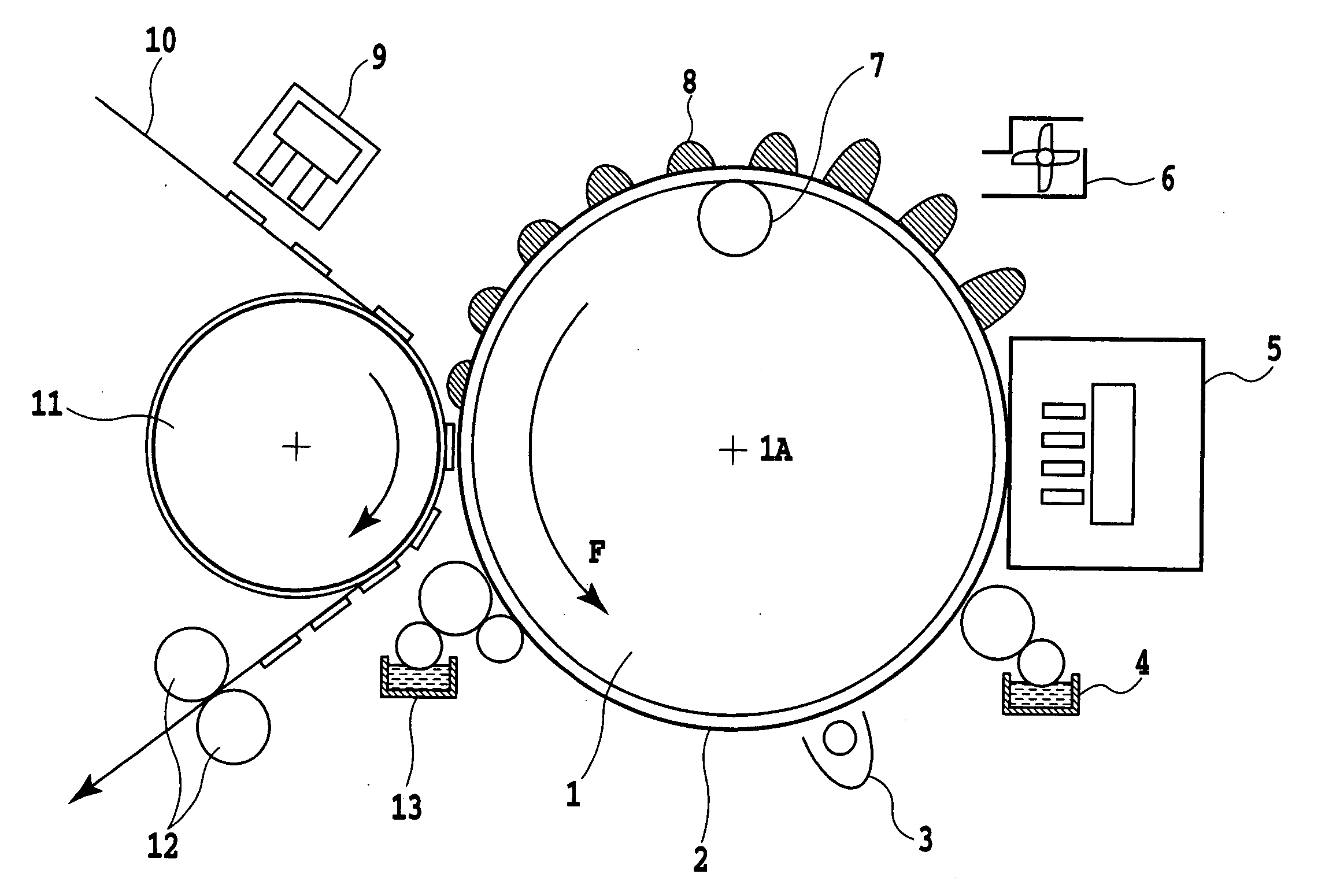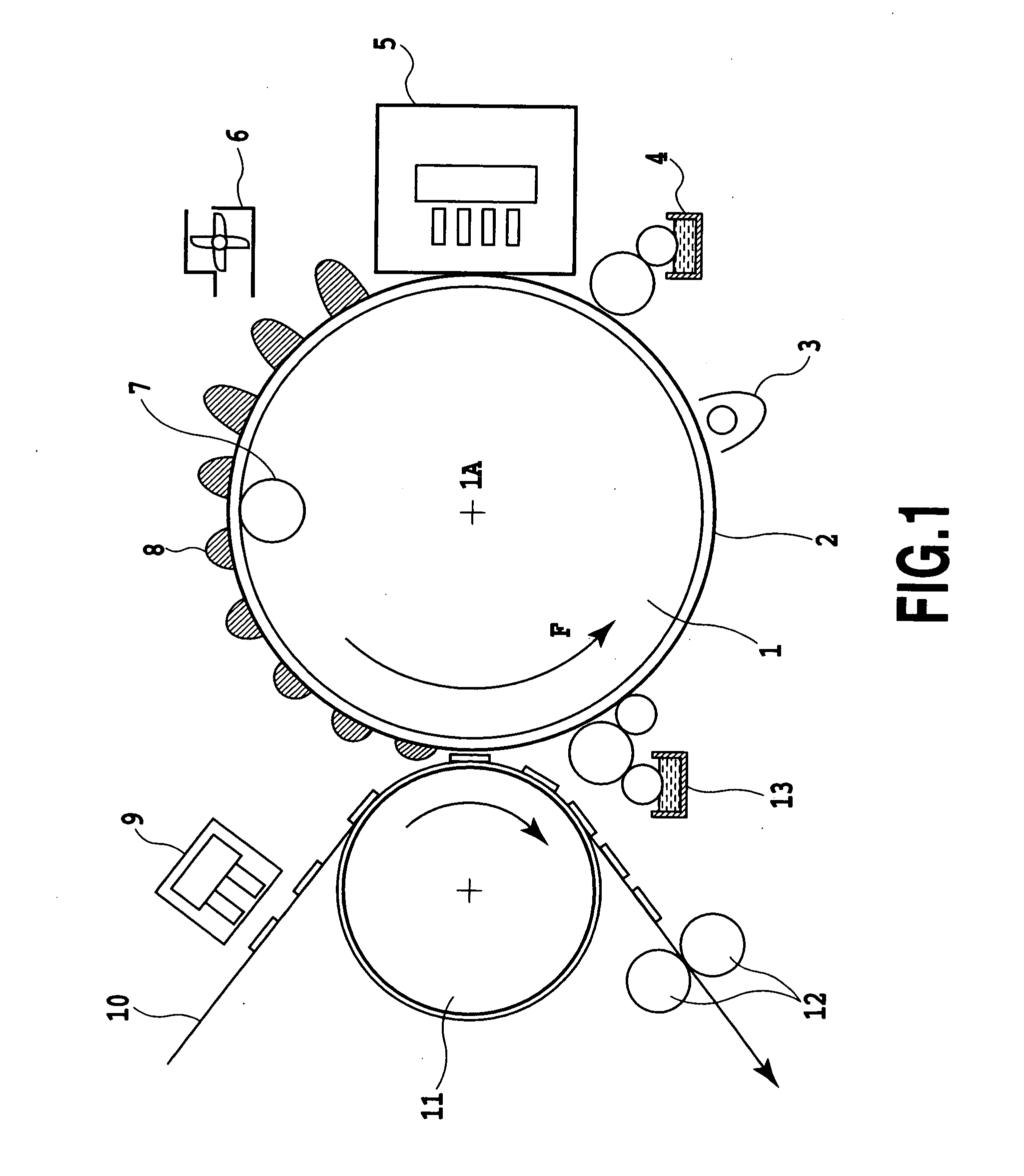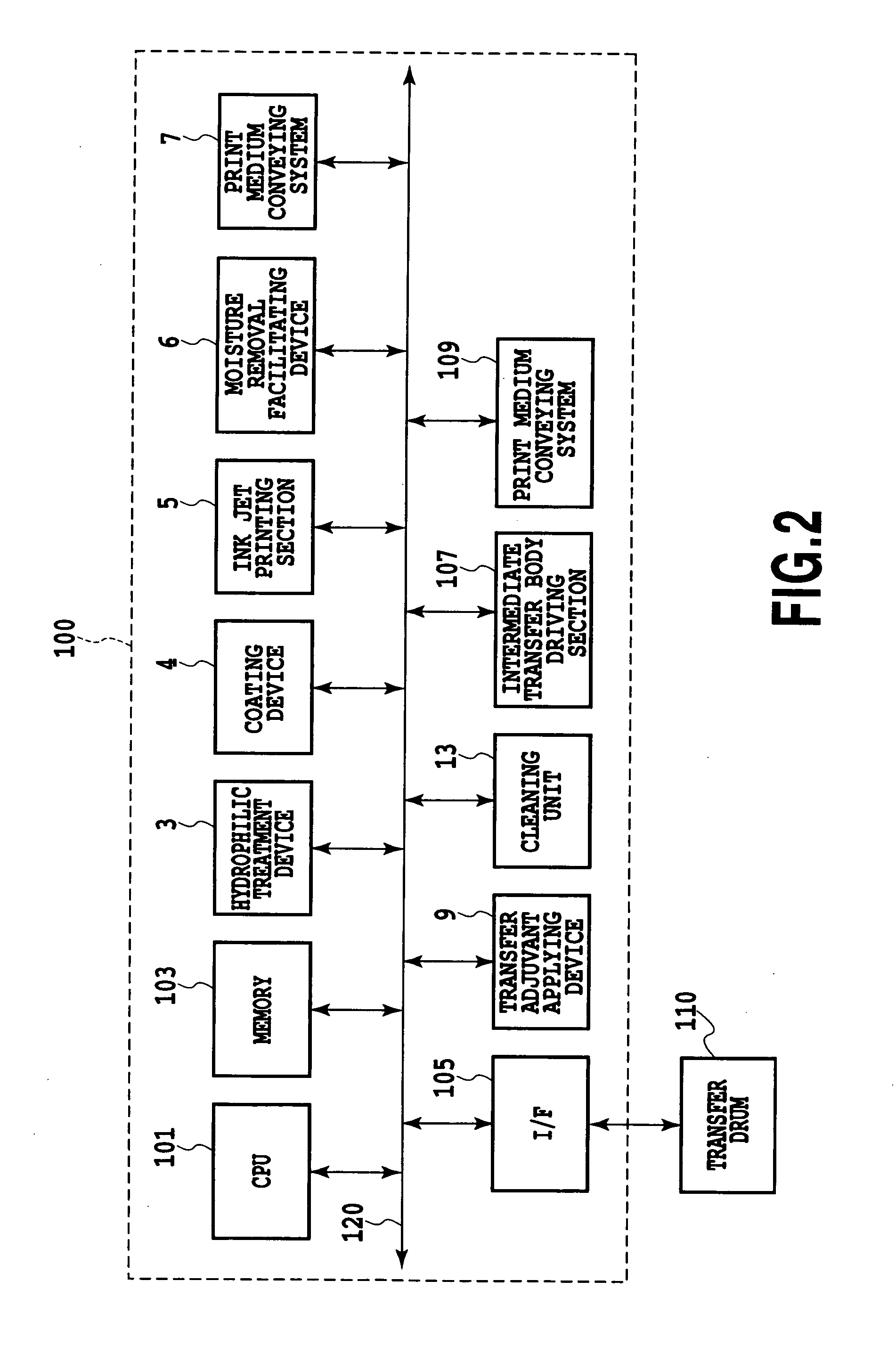Method and apparatus for forming image
a technology of forming apparatus and image, applied in printing and other directions, can solve the problems of not being accepted by commercial printing, no exclusive paper is available, and the ink jet printing system is not expensive, and achieves the effect of sacrificing the high degree of freedom of the ink jet printing system
- Summary
- Abstract
- Description
- Claims
- Application Information
AI Technical Summary
Benefits of technology
Problems solved by technology
Method used
Image
Examples
specific examples
[0137] Now, the present invention will be specifically described taking several examples by way of example. In the following description, the term “parts (pts)” or “%” means a weight basis unless otherwise specified.
example 1
[0138] The image printing system according to the present invention will be described below step by step.
(a) Formation of an Ink Image on the Intermediate Transfer Body
[0139] In the present example, as an intermediate transfer body, a drum was used which was made of aluminum and to which commercially available NBR having a rubber hardness of 80° and a thickness of 0.2 mm was glued. An ink jet printing apparatus (a nozzle density of 600 dpi, an ejection amount of 4 pl, and a driving frequency of 5 kHz) and an ink having a composition shown below was used to form a mirrored image of a character on the intermediate transfer body.
CI. food black 2: 2.5 partsGlycerin: 5 partsDiethylene glycol: 7 partsSurface active agent: 1 part(acetylenol EH manufactured byKawaken Fine Chemicals Co., Ltd.)Ion-exchanged water:84.5 parts
(b) Application of the Ink Transfer Adjuvant to the Print Medium
[0140] On the other hand, an ultrasonic spray coating device was used to coat 2.5 ml / m2 of pure wa...
example 2
(a) Formation of an Ink Image on the Intermediate Transfer Body
[0142] In the present example, a drum was used which was made of aluminum and on which silicone rubber (KE30 manufactured by Shin-Etsu Chemical Co., Ltd.) having a rubber hardness of 60° was coated to a thickness of 0.5 mm. Then, a roll coater was used to coat a fluorine-containing surface active agent (Surfron S-141 manufactured by SEIMI CHEMICAL Co., Ltd.) on the surface of the intermediate transfer body.
[0143] Then, the roll coater was used to coat a 5 wt % water solution of polymer flocculant (C577S manufactured by Mitsui Sitech Co., Ltd.).
[0144] Then, an ink jet printing apparatus (a nozzle density of 1,200 dpi, an ejection amount of 4 pl, and a driving frequency of 8 kHz) was used to form a mirrored color image. Inks were used which had compositions shown below.
Dyes shown belowBlack:CI. food black 2Cyan:CI. direct blue 199Magenta:CI. acid red 289Yellow:CI. acid yellow 23Glycerin:10 partsDiethylene glycol: 5 p...
PUM
 Login to View More
Login to View More Abstract
Description
Claims
Application Information
 Login to View More
Login to View More - R&D
- Intellectual Property
- Life Sciences
- Materials
- Tech Scout
- Unparalleled Data Quality
- Higher Quality Content
- 60% Fewer Hallucinations
Browse by: Latest US Patents, China's latest patents, Technical Efficacy Thesaurus, Application Domain, Technology Topic, Popular Technical Reports.
© 2025 PatSnap. All rights reserved.Legal|Privacy policy|Modern Slavery Act Transparency Statement|Sitemap|About US| Contact US: help@patsnap.com



